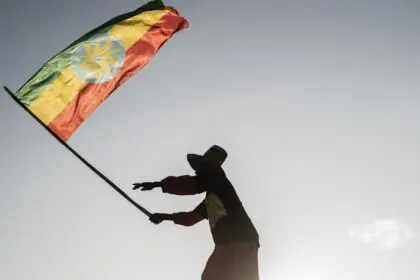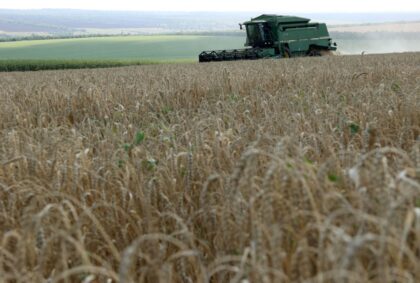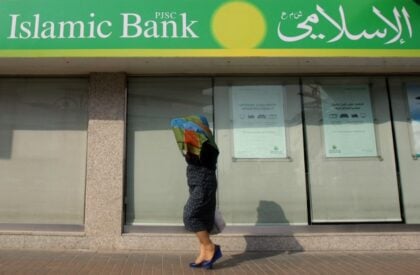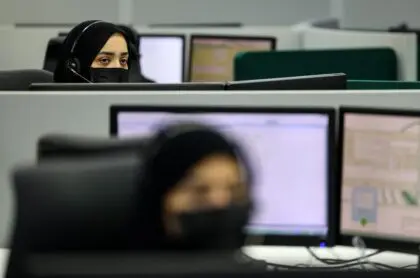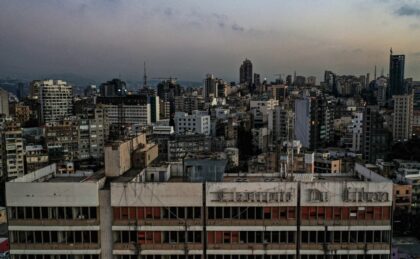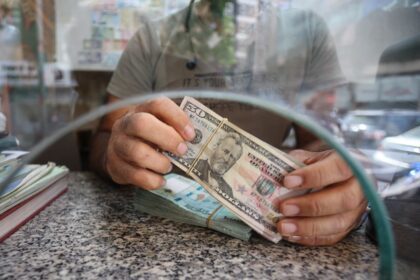
Introduction
Sudan has experienced protracted social conflict, civil war, and, in July 2011, the loss of three-quarters of its oil production due to South Sudan’s secession. The oil sector had driven much of Sudan’s GDP growth since 1999.
For nearly a decade, the economy boomed on the back of rising oil production, high oil prices, and significant inflows of foreign direct investment. Since South Sudan’s secession’s economic shock, Sudan has struggled to stabilize its economy and make up for the loss of foreign exchange earnings. The interruption of oil production in South Sudan in 2012 for over a year and the consequent loss of oil transit fees further exacerbated the fragile state of Sudan’s economy.
Ongoing conflicts in Southern Kordofan, Darfur, and the Blue Nile state, lack basic infrastructure in large areas, and reliance by much of the population on subsistence agriculture, keep close to half of the population below the poverty line, According to the CIA World Factbook.
Sudan is attempting to develop non-oil sources of revenues, such as gold mining and agriculture while carrying out an austerity program to reduce expenditures. The world’s largest gum Arabic exporter, Sudan produces 75-80% of the world’s total output. Agriculture continues to employ 80% of the workforce.
Sudan introduced a new currency, still called the Sudanese pound, following South Sudan’s secession, but the value of the currency has fallen since its introduction. Khartoum formally devalued the currency in June 2012, when it passed austerity measures that gradually repealed fuel subsidies. Sudan also faces high inflation, which reached 47% annually in November 2012 but fell to about 35% per year in 2017.
Gross Domestic Product
The World Bank expects Sudan’s gross domestic product (GDP) growth rate to rise19, consistent with its forecast for high economic growth across sub-Saharan Africa. The country’s GDP will continue rising for the next two years, from 2.6 per cent in 2018 to 3.1 per cent in 2019 and 3.5 per cent in 2020, according to the bank’s.
The bank attributes the increase to predicted mining production and mineral price stability, which will boost economic activity in mineral-exporting countries and improve agricultural conditions and infrastructure investments in other countries in the region.

| Indicators | measuring unit | 2016 | 2017 | Change ± |
| GDP (at constant 2010) | Billion US$ | 76.149 | 79.411 | 3.262 |
| GDP growth (annual) | % | 4.7 | 4.3 | -0.4 |
| GDP per capita (constant 2010) | US$ | 1,924 | 1,959 | 35 |
| GDP (at current value) | Billion US$ | 95.584 | 117.488 | 21.904 |
Source: World Bank.
Poverty
The latest official estimates of poverty in Sudan are based on the 2014-2015 National Budget and Household Survey. This survey showed that an estimated 36.1 percent of the population had per capita expenditure below the national poverty line. The World Bank is currently finalizing a Pa poverty report that estimates poverty figures using the international poverty lines (IPLs) of $1.90 (extreme poverty) and $3.20 (global poverty) per person per day. In the meantime, World Bank poverty figures for Sudan are based on the 2009 survey.
In 2009, an estimated 46.5 percent of the population (15.6 million) had per capita spending levels below the national poverty line. When measured against the IPL of $1.90 per person per day (2011 purchasing power parity), 14.9 percent of the population was poor. When poverty was measured against IPLs for lower and upper-middle-income countries ($3.20 and $5.50 per person per day), 40.5 percent and 73.2 percent were poor, respectively.
In 2009, the poverty rate in rural areas, where nearly two-thirds of the population live, was much higher than in urban areas. Differences were also evident throughout the municipalities. For example, poverty in North Darfur was three times higher than in the capital Khartoum.
A Gini index of 35.4 indicates that inequality was moderate compared to other countries in sub-Saharan Africa. However, until the analysis of the 2014-2015 survey data is complete, the current poverty and inequality figures will remain unclear. That said, the food price increases in 2018 likely exacerbated poverty, inequality and overall economic well-being.
| Indicators | Number of Poor (million) 2009 | Rate |
| National Poverty Line | 15.6 | 46.5 |
| International Poverty Line 2 in Sudanese pound (2009) or US$1.90 (2011 PPP) per day per capita | 5.0 | 14.9 |
| Lower Middle Income Class Poverty Line 3.4 in Sudanese pound (2009) or US$3.20 (2011 PPP) per day per capita | ||
| Upper Middle Income Class Poverty Line 5.9 in Sudanese pound (2009) or US$5.50 (2011 PPP) per day per capita | 13.6 | 40.5 |
Source: The World Bank.
Infrastructure
Telecommunications
Supported by high oil revenues from 1999 to 2011, Sudan’s infrastructure improved markedly compared to the pre-oil period. According to a World Bank Report, that improvement had a strong impact on per capita growth, contributing 1.7 percentage points. The information and communication (ICT) revolution contributed most to Sudan’s growth. The country has invested heavily in infrastructure in recent years, with some notable achievements.
For example, around 10.5 million Sudanese enjoyed internet access in 2014, according to the Sudan Ministry of Communication figures. That is almost one-fourth of the country’s population. In ICT, Sudan has made enormous strides in liberalizing the sector and thereby attracted significant private capital. Mobile penetration soared from less than one percent in 2000 to 77 percent by the end of 2015.
Roads
Sudan’s road network almost doubled in length, reaching 6,200 kilometers, all of which was rolled out between 2000 and 2008. Nonetheless, much of the country still lacks roads. The huge expansion of the road network in Sudan is characterized by poor construction and proper maintenance.
This lack of adequate roads negatively affects agricultural and animal products, which are located in rural areas, as it impedes its access to both local and foreign markets, making it less competitive in regional markets by adding high transport costs.
However, the country is connected by asphalted roads to three of its important neighbors, namely Egypt, Eritrea, and Ethiopia, and the borders of South Sudan, Chad, and the Central African Republic.
Railways
The railway system in Sudan is extensive, with about 4757 Kilometers of railroads across the country, to all major towns and cities. Sudan railways built by the invading British troops in the late 19th century played a role in nation-building and providing infrastructure for agriculture, trade, and industry until the mid-1970s. Since then, the railways have begun to deteriorate for lack of maintenance and renovation. It is currently operating at about one-fifth of its capacity. In 2016 Sudan railways transported 850 thousand metric tons of goods.
Many attempts to maintain and improve the railway network and its capacity were hindered by political instability and lack of funding, and suffering from political interference to curb railway trade unions’ power. The railways were neglected by the government, which preferred to invest in less expensive land highways. In 2015, the railways were reported to have 60 locomotives in service, but they have a maximum speed of only 40 km per hour because of the tracks’ poor state.
The first serious step to modernize Sudan railways was made in 2014, with the help of China. The modern Chinese-made Nile Train between Atbara and Khartoum is becoming very popular even though it takes much longer than buses to make the trip because it is cheaper and safer.
Sudan government officials have also repeatedly talked about a project to build a railroad from Port Sudan on the Red Sea across the country, the western neighbor Chad and later to Cameron for the cost of 2 billion dollars. China is again the suggested partner for this big project.
In 2015, President al Bashar, during his electoral campaign, visited the so-called ‘railway city’ Atbara, saying he was committed to expanding the current railroad network.
River Transport
The Nile – consisting of the White Nile and the Blue Nile, provides an important inland transportation route and has played an important role historically. However, its usefulness is limited by several cataracts in the main Nile, between Khartoum and northern Sudan.
The White Nile, south of Khartoum, has shallow stretches that prevent the passage of large barges. The Blue Nile is not very suitable for river transport and has two dams that make it less suitable for river transport.
River Transport historically played a vital role in connecting North and South Sudan.

That was hindered by the civil war of 1983-2005 and the Independence of the South. Recently President Bashir announced reopening of river transport to the South as a part of reconciliatory gesture towards the republic of South Sudan.
Sea Ports
Sudan has three operational deep-water ports, Port Sudan, Sawakin, and the Marsa Bashayer oil export terminal.
Sawakin was the oldest operating, at least since the 11th century. Sudan’s colonial administration built Port Sudan harbor in 1906 because Sawakin – located only 45 km away – proved inefficient and too small for the new large ships of the 20th Century. In 2014, Port Sudan handled 1,539,034 metric tons of exports and 6,002,652 metric tons of imports.
A national shipping company, Sudan Shipping Line (SSL), was established in 1962 as a joint venture with the Yugoslavian Foreign Trade Bank with two Yugoslav-built cargo vessels. In 1967, the Sudan government bought the Yugoslavian share. The Sudan Shipping Line grew to ten ships, totaling more than 122,200 deadweight tons in 1990.
After reaching a peak of fifteen ships in 1980 during the mid-1980s, SSL started to sell its fleet one by one because of financial difficulties. SSL no longer owns any operational ships now. Its managers recently denied press reports that the government is considering a plan to privatize the company, vowing that the company will soon revive and buy new ships.
Energy
Electricity
Power generation capacity in Sudan tripled, from about 800 megawatts (MW) in 2005 to 2,687 MW in 2015, with a shift
toward hydropower from the expensive thermal power. The Merowe Dam, built between 2003 and 2010 on the Fourth Cataract of the Nile in northern Sudan, generates 1,250 megawatts. This makes it the largest contemporary hydropower project in Africa. Nevertheless, the shortage of electric power is the main bottleneck in the Sudan economy. According to local media reports, factories in Sudan operate, on average, at only one-quarter of design capacity, because of a shortage of power.
The cost of energy significantly reduces the competitiveness of Sudanese industries in both national and international markets. The total production of energy is estimated to meet only 70% of the total demand for power in Sudan, which explains why the government is planning the construction of three more hydropower dams in Sheriak, Kajbar, and Dal, despite the strong objections of citizens at the proposed locations of dams in eastern and far northern Sudan.
Merowe Dam is criticised for its forced relocation for its forced relocation of some fifty thousand people from their historical home to a poorly developed semi desertous area. Other concerns are its possible negative environmental impact, which was not properly studied, and the archaeological heritage lost under its water.
Agriculture
Agriculture is the most important economic sector in the country, creating 39 percent of GDP, employing more than one-third of the workforce, and producing 80 percent of its exports until the late 1990s when oil and gold, to a lesser extent, took over as the main export products.
Agricultural and animal products made up 75% of Sudan exports, until 1999 when oil became Sudan’s main export product. About 22% of imports are destined for agricultural production, including such inputs as machinery, fertilizers, and pesticides.
The modern economy of Sudan was established under the British colonial administration, which governed from 1899 to 1956.
Upon the first establishment of its rule, the British governor-general thought the farmers should grow wheat but changed his mind thinking a better cash crop was needed. As a result, the administration made the long-staple cotton production the centerpiece of Sudan’s economy. In 1913, the Condominium administration, at times adopting its own policy contrary to the British Government but in this case backed by the British government, raised a loan to finance the construction of a dam at Sennar, on the Blue Nile, which was completed in 1925 and improved crop irrigation.
Additionally, the Gezira Scheme, located in the triangle of land south of the two Niles’ confluence, came into being. Ultimately covering an area of more than two million feddans, it became the world’s largest single farming enterprise under one management and the most important source of foreign revenue for Sudan for decades.
The colonial state constructed another agricultural pillar of Sudan’s modern economy following the Second World War. Mechanized sorghum (dura) farming, the main food staple of the northern part of the country, began in 1945 near Gedaref, in eastern Sudan. The first mechanized crop-production scheme covered about 12,000 feddans. At independence in 1956, more than 300 private mechanized schemes were covering about 388,000 feddans.
Rain-fed mechanized agriculture occupies a strip (estimated at 5 million hectares) of the clay plains in the high-rainfall savannah belt in central Sudan. The main rain-fed crops cultivated in Sudan are sorghum, sesame, peanuts, and, to a lesser extent, cotton and sunflower seeds.
Cotton is the principal export crop in both rain-fed and irrigated sectors and an integral part of its economy. Sudan is the world’s third-largest producer of sesame seed, after India and China. Sugarcane is also a significant crop on which the large sugar industry of Sudan depends. According to the Annual report of Sudan Central Bank of 2014, irrigated agriculture amounted to 3.3 million feddans while rain-fed agriculture reached 36 million feddans.
Dependency on oil and neglecting investing in agriculture after 1999 led to a sharp fall in agricultural products export from 75% in 1995 to only 30% in 2014. The production of cereals, sorghum, millet, and wheat declined in 2010 reached a total of only 2.9 million metric tons compared to 4.9 million metric tons in 2006-09 with a decline of nearly 42%.
Animal Production
Animal husbandry is an important part of the national economy. Its production increased during recent years because of better veterinary treatment, more liberal credit policies, and higher market prices.
Livestock is raised in all parts of Sudan mainly by pastoral and agro-pastoral groups, with the former dependent on livestock and the latter on both livestock and cultivation. The Sudan Ministry ofAnimal Resources estimated in 2011 that there are 103 million head of livestock; 28.6 million cows, 39.2 million sheep, 30.7 million goats, and 4.7 million camels. More than 55% of these animals are raised in Darfur and Kordofan, with herd sizes varying from below fifty head to a few thousand per household.
The livestock sector of Sudan provides a livelihood for about 17% of the population. Sudanese livestock products meet the domestic demand for meat in addition to a substantial excess for export, both amounting to about 25% of total country exports in 2015.
Oil
Oil exploration in Sudan began in 1959, when Agip, an Italian oil company, was given a concession in the Red Sea area in northeastern Sudan; no oil was found. Many other European companies explored oil and gas in Sudan without success.
The US oil giant Chevron began operations in Sudan in 1975, with a large concession mainly in Western Kordofan and Western Upper Nile. Chevron succeeded in two fields, Abu Jabra and al-Sharaf, on the border between Darfur and Kordofan. They soon made major discoveries in Western Upper Nile, near Bentiu. They developed the Muglad Basin, where they found two huge oil fields, unity and Heglig, both now in a disputed area between Sudan and South Sudan.
Chevron halted operations in Sudan in 1984, after attacks by the southern rebels of the Anyanya II movement, and probably also because oil prices dropped to historic lows, making Chevron’s investments in Sudan less feasible.
It was decided that the newly discovered oil would be exported through a pipeline to be built from oil fields to the Red Sea.
This meant that most of the oil infrastructure would be built in the north. In June 1992, following the 1989 coup, Sudan’s President Bashir announced that Concord International, a small company owned by a Sudanese businessman closely tied to the ruling party, bought the Chevron concession.
Oil exploration and export from an area devastated by civil war continued, with exorbitant human and environmental costs. The Sudanese government wanted to obtain oil at whatever it costs, even if it meant harming the environment. The SPLA rebel movement wanted to stop these efforts, leading to conflict between the two parties. In the process, the Sudanese army in 1992-1993 created an area completely devoid of civilian life, stretching for kilometers beyond the oil fields and related facilities.
Twelve-Year Oil Boom
The first shipment of Sudan crude oil was loaded aboard a Shell tanker at Marsa Bashyer on the Red Sea (18 km south of Port Sudan) on 31 August 1999, marking the beginning of twelve years of unprecedented economic growth. Sudan’s oil production peaked at an average of almost 500,000 barrels per day in 2007, before falling back somewhat in 2008-2009.
It reached only about 125,000 BPD after the independence of South Sudan in 2011, putting an end to the ‘boom’ years because around 75% of oil and production was coming from oilfields in the present Republic of South Sudan, while 90% of pipelines and export facilities are in (North) Sudan.
The first shipment of Sudan crude oil was loaded aboard a Shell tanker at Marsa Bashyer on the Red Sea (18 km south of Port Sudan) on 31 August 1999, marking the beginning of twelve years of unprecedented economic growth. Sudan’s oil production peaked at an average of almost 500,000 barrels per day in 2007, before falling back somewhat in 2008-2009. It reached only about 125,000 BPD after the independence of South Sudan in 2011, putting an end to the ‘boom’ years because around 75% of oil and production was coming from oilfields in the present Republic of South Sudan, while 90% of pipelines and export facilities are in (North) Sudan.
The 1540-km oil-export pipeline from the oilfields located in southern Kordofan in Sudan and the states of Upper Nile and Bahr el Ghazal, in the present Republic of South Sudan, to a marine export terminal on the Red Sea, was built by GNPOC, a consortium of Chinese, Malaysian, and European companies, for 1 billion USD.
The signing of the Comprehensive Peace Agreement in January 2005 and the cessation of hostilities between Sudan and South Sudan improved oil production and export. The agreement stipulated that the south’s oil be divided 50/50 between the government in Khartoum and the south’s regional government in Juba. After independence, tensions between the two Sudan flared on the issues of transit fees for South Sudan’s oil to the north and the demarcation of the border and disputed areas between the two countries, including the oil-rich territory Abyei.
Oil Transit Fees
Sudan and South Sudan agreed after laborious talks in Addis Ababa. In September 2012, the South would pay Sudan USD 9.50 per barrel for exported oil and a fee of USD 15 per barrel to fulfill a 3.028 billion USD package to be paid in three years. That amount was agreed upon between the two sides as a transitional financial arrangement (TFA) to compensate for the loss of Sudan’s revenues due to South Sudan’s secession in 2011. When the agreement was reached, the oil price was above USD 100 per barrel.
As the civil war erupted in the South in 2013 reduced the production from 240 000 barrels per day to 140000 and the drop of oil prices to USD 29, it became unfeasible for the South to continue producing oil to remain with only 4 dollars for a barrel.
The two countries have to sit at the negotiation table again to make a new deal in January 2016. The oil transit fees will be fluctuating according to international prices instead of the fixed amount and the and the 3,028 USD will be paid over a longer period. The specific amount to be paid was left to technicians to decide. Oil transit fees remain to be a major foreign currency source for Sudan.
Oil revenue has caused major developments and other changes in Sudan’s economy over the past two decades. Thousands of kilometers of new roads have been constructed; modern satellite and digital communications facilities stretch across the country. A huge hydropower dam on the Nile River and thermal power stations have been built. The country’s macroeconomic figures soared, including a high GDP growth rate and low levels of inflation. More direct foreign investment poured into Sudan.
However, the boom’s decade harmed agriculture, which was neglected and left to deteriorate further, leading to more poverty and mass migration to the capital (Khartoum) and other cities. On the other hand, thousands of lavish villas in Khartoum’s well-off neighborhoods reveal where and how significant parts of the oil revenues were spent.
Gold
Gold had been mined in the Red Sea Hills since Pharaonic times. During the 1970s, the government located more than fifty potential gold-producing sites in various countries. Several joint ventures between the Sudanese Mining Corporation, a government enterprise, and foreign companies like the French giant Areva and Canadian LaMancha Resources (TSX: LMA) were launched in the 1980s; these undertakings produced gold at Ariab and Gebeit and several other mines near the Red Sea Hills, beginning in 1987.
In 1988, about 78,000 kilograms of gold ore were mined in Sudan. In the late 1990s, Sudan and two French mining companies formed a joint venture to exploit gold reserves in the Khor Ariab, in the Red Sea Hills. The two French companies were forced to sell their shares to an Egyptian businessman in May 2015 due to international sanctions against Sudan, as French banks declined to money transfers from Sudan.
In 2012, Sudan’s president, Omar al-Bashir, opened the country’s first gold refinery, designed to be one of Africa’s largest operations. The refinery’s annual capacity is 150 kilograms a day, 150 tons of gold, and 30 tons of silver annually. Sudan’s government is working hard and pinning hopes that the revues of gold mining will compensate oil revenues missed after South Sudan’s independence in 2011. The civil war erupted in the South, halting oil production and depriving Sudan of oil transit fees.
Artisanal gold mining, or traditional mining as it is called in Sudan, has been a vital source of income for both the government and around one million young Sudanese roaming in deserts and valleys in search of gold during the last few years. Sudanese Minister of Mineral told the press that the total production of gold in Sudan reached 77 tons in 2014 and expected to be more shortly. Less than 10 tons were produced by scores of national and foreign companies busy with gold mining. The rest of the 63 tons was made by traditional mining. Sudan exported 1.36 billion dollars of gold in 2014, according to the Sudanese Minister of Minerals.
Chrome ore was being mined in the Ingessana Hills in South Blue Nile since the 1970s, is also an important export for Sudan. More than 20,000 metric tons of chrome ore were being exported to Japan and Western Europe until the production came to an end by spreading the civil war to the region in 1983. Production resumed in 1988 with 5000 metric tons capacity per year.
Industry
Sudan industry depends mainly on its agricultural sector, getting most of its raw materials from agricultural products, including textiles, leather tanning, sugar, edible oils, and other food products, along with some other related operations, such as soap making. Sudanese industry accounted for about 20% of the gross domestic product (GDP) in 2014.
Textiles
The first modern textile factory goes back to 1945 when the private sector established the Anzara (Equatoria State) textile factory. It was designed to produce 4 to 5 million yards of cloth per year from locally grown cotton. However, textile industries’ construction on a large scale began under the first national government, immediately after independence in 1956, and later under the Numeri regime (1969-1985). In 1962 the first plant, the Sudan Textile Factory, which was financed completely by the Sudanese private sector, began production; many factories followed. The textile industry in Sudan has depended solely upon cotton that is grown in the country.
The Sudan government owns fifteen spinning factories. Only five are working, and seventeen textile factories, only four workings, are mostly in privatization.
There are also nine large spinning and weaving plants operated by national and joint venture companies in Sudan.
About 75 small textile factories of varying capacity are scattered mainly in Gezira, the main cotton-producing region of Sudan and Khartoum. The textile industry’s total design capacity is estimated at 54,000 tons of spun yarn and 380,000,000 yards of cloth per year, but these plants are working at a fraction of their capacity.
The textile industry is going through many financial, mechanical, and technical difficulties. Mainly because of the decline of cotton production in Sudan because of the government’s political decision to produce more wheat in the Gaziras scheme instead of cotton in the 1990s, which proved to be disastrous a few years later. That is to add to the frequent electrical power shortages, dumping local market with cheap imported textiles. Some plants have even halted production for long periods. At least 80,000 Sudanese workers have lost their jobs during the last ten years because of the decline in the textile industry in Sudan until 2013.
Three textile factories were affiliated with Giad. A government-owned leading industrial group in 2015. Another important spinning factory in Al Haji Abdullah in Algazira is undergoing a rehabilitation process. These measures are expected to revive the textile industry and increase manufacturing growth.
Sugar Processing
Sugar production is a key industry in Sudan, being Africa’s third-largest producer of sugar. There are six cane-sugar factories in Sudan belonging to Khartoum-based Sudanese Sugar Company: New Halfa, Guneid, Assalaya, and Sennar 288,000 tons. The White Nile Sugar Company (WSNC) aims to produce 450,000 tons a year.
The Kenana Sugar Company is a shareholder of 30% of WNSC and owns the Kenana factory, which produces 400,000 tons a year, making it the largest producer in Sudan and the world’s largest producer of white sugar. KSC is a joint venture of the Sudanese government, the Kuwaiti government, private investors, and some other local and foreign small shareholders. While Kuwait owns 30.5% of shares, Saudi Arabia 10.92%, and the Arab Investment
Company 6.96%, the Sudanese government (35.17% of shares) is notorious for making decisions without consulting the GCC co-shareholders. For example, in mid-2014, a crisis loomed following threats of the Minister of Industry firing the managing director. Eventually, this took place without him or shareholders having been informed or consulted.
During the last five years, at least 2 billion USD in local and foreign investments have gone into the sugar industry. Two new factories have been built, and a few existing ones were renovated. The government has attempted to proceed with a controversial plan to privatize sugar factories, but the National Assembly has rejected it numerous times.
Cement
The last two decades’ construction boom greatly increased the demand for cement in Sudan and made it one of the most important non-agricultural industries. There are seven cement plants in Sudan. Many Chinese, Saudi, and Turkish companies have invested more than USD 2 billion in the Sudanese cement industry during the last few years. The cement production capacity is 15 million tons per year, but the actual production is only 3.5 million tons per 2014. The shortage of power is the main factor in holding down production.
Trade and Banking
Trade
In 2013, Sudan exported USD 3.92 billion in goods and imported USD 7.83 billion, resulting in a negative trade balance of USD 3.91 billion. The main exports of Sudan are crude petroleum (USD 2.43 billion), sheep and goats (USD 423 million), oilseeds – other than sesame (USD 377 million), insect resins – which is gum Arabic (USD 117 million), and gold (USD 73.3 million); top imports are wheat (USD 683 million), raw sugar (USD 464 million), medicines (USD 260 million), cars (USD 196 million), and rubber tires (USD 144 million).
Sudan’s top export destinations are China (USD 1.92 billion), Saudi Arabia (USD 516 million), Japan (USD 412 million), India (USD 306 million), and South Korea (USD 116 million). The top import origins are China (USD 2.39 billion), India (USD 832 million), Egypt (USD 526 million), Saudi Arabia (USD 518 million), and Germany (USD 298 million).
Banking
34 banks are operating in the country, sixteen of which are wholly or majority-owned by private shareholders, seven state-owned commercial banks, four other state-owned banks providing finance for specific sectors of the economy, and two investment banks.
Most Sudan banks adhere to Islamic banking principles, providing financial products that are structured to comply with Islamic law (Sharia). In practice, though these banks claim that they do not charge interest on loans and financing trade, administrative and other fees imposed by the Islamic banks are always much higher than the prevailing rate of interest of ordinary banks. Most commercial banks in Sudan invest mainly in local and partially foreign-trade financing, with limited resources allocated to finance agriculture and industry.
The international sanction against Sudan and restrictions on financial dealings with Sudan placed extreme limitations on Sudanese banks from accessing international banking and financing trade. Sudanese banks can only transfer and receive money from abroad through intermediary banks in Saudi Arabia. Also, the United Arab Emirates, which made the country prone to financial and political pressure. Tourists traveling in Sudan cannot use their own banking cards as Sudan is blocked from such dealings.
Another example of the impact of the sanctions on banking, as mentioned earlier, is that two French companies who were busy with gold mining in Sudan for decades were forced to sell their shares and leave Sudan in 2015 as the result of international sanctions against Sudan, as French banks declined to receive money transfers from Sudan.
Workforce

According to the 2011 labor force Survey of the Sudanese Ministry of Human Resources and Labour, the labor force is estimated at 9.3 million, compared with 5.3 million in the 1990 survey, with an annual growth rate of 2.1% in 2011. ILO estimated unemployment to be around 13% in 2009. The number of unemployed increased to 1.8 million in 2011, with an annual increase of 3.3%.
Migration from rural areas to urban centers caused shortages of unskilled labor in rural areas, especially in irrigated agricultural areas like Gezira and cane sugar factories. Meanwhile, emigration abroad by skilled labor and professionals changed the workforce’s structure beginning in the 1990s, causing a shortage of skilled laborers in the whole country.
The deterioration of the agricultural sector and the spread of instability and ethnic conflict led to more rural areas’ unemployment. The agricultural sector workforce declined in 2011 to 47% from 60%, as noted in the 1990 survey, decreasing the agro-industry share to 7.2%.
Expatriates and Remittances
Approximately 1.8 million Sudanese work abroad, mainly in Saudi Arabia and the Arab Gulf states, and a considerable number live in Europe and the United States. According to official Sudanese figures, Sudanese expatriates remit more than USD 3 billion annually, constituting the second-largest source of foreign currency in Sudan, after oil.
Current remittances by expatriates are increasing at an average annual rate of 16%. This growth accelerated in the second half of the last decade with leaps of 7-8% per year, while the contribution of remittances to the GDP dropped from 6% in 2003 to one percent in 2014. Causes were mainly the growth of Sudanese GDP after oil and oil transit fees paid by South Sudan, in addition to the discouraging government policies of official exchange rates of foreign currencies, which tempted Sudanese expats to keep their money abroad.
Corruption
International monitoring groups consider Sudan one of the most corrupt countries globally, ranking 165 (out of 167) in the Corruption Perceptions Index 2015. Public servants demand bribes for services to which individuals and companies are legally entitled, and government officials are frequently involved in corrupt practices. Officials suspected of corruption are not investigated, but the auditor general has called for government members to be prosecuted for the embezzlement of public funds. The corruption accusation even reached the former deputy director of Bank of Sudan and present Minister of Finance Bader Eldin Mohamoud.
Latest Articles
Below are the latest articles by acclaimed journalists and academics concerning the topic ‘Economy’ and ‘Sudan’. These articles are posted in this country file or elsewhere on our website:




